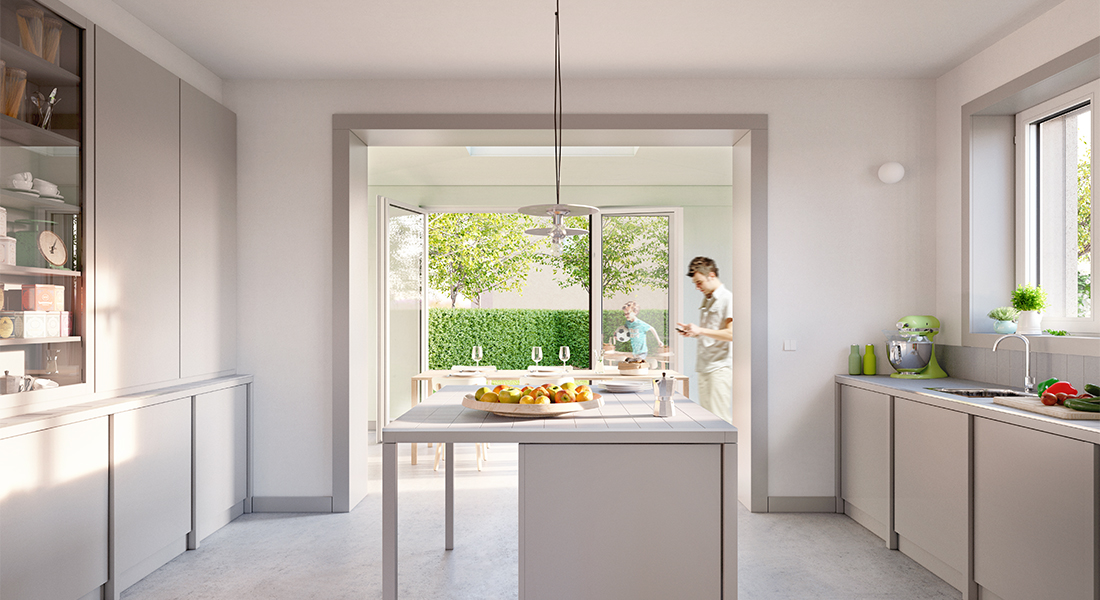RenovActive
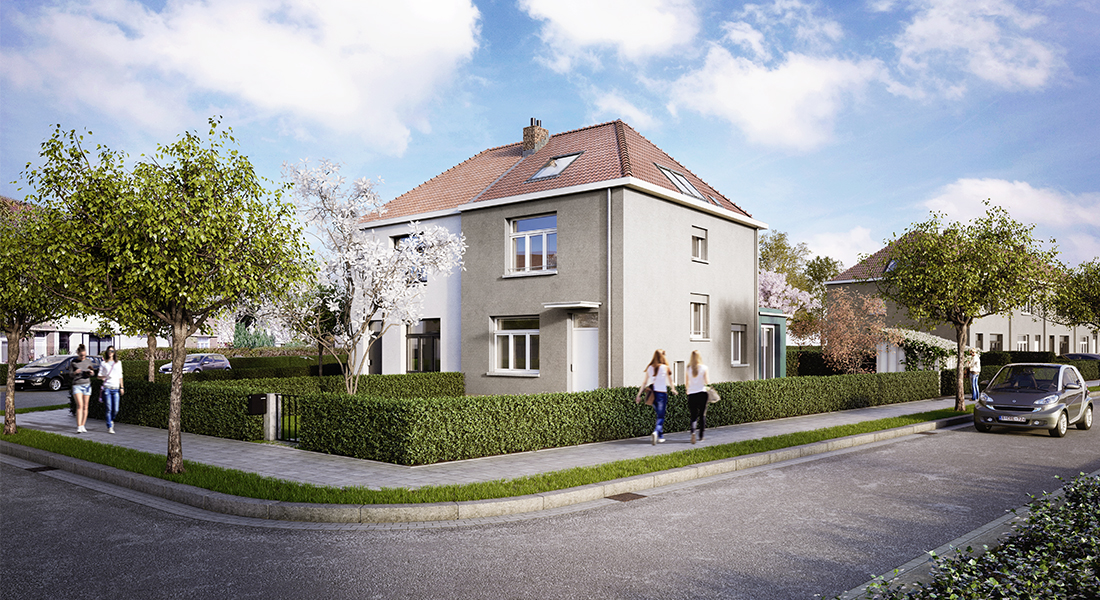
RenovActive House is a single family house of the social housing company Foyer Anderlechtois, located in Brussels, in the garden city Bon Air in Anderlecht. The renovation is based on the concept of “Climate Renovation”: to renovate houses to create an excellent indoor climate with a good energy performance. Several renovation scenarios were considered, their performance was analysed according to the Active House specifications.
The project is an example of affordable and replicable renovation techniques that not only improves the energy efficiency of the dwelling but perhaps more importantly, focuses on providing the best possible indoor environment.
The design targets for indoor climate, energy and environmental impact are based on the Active House Specification. As there is a clear financial frame for the house, the approach in the design process was to evaluate different scenarios that combined different technical solutions. Each scenario was evaluated according to the Active House radar diagram.
The RenovActive House includes all of the main replicable elements that constitute the RenovActive concept. All of the elements are implemented as separate units of products and solutions, and optimise essential home performance parameters in relation to energy, comfort and indoor environment – the three pillars of the Active House concept. This flexibility and inherent scalability makes it possible to tailor every project and match its respective budget.
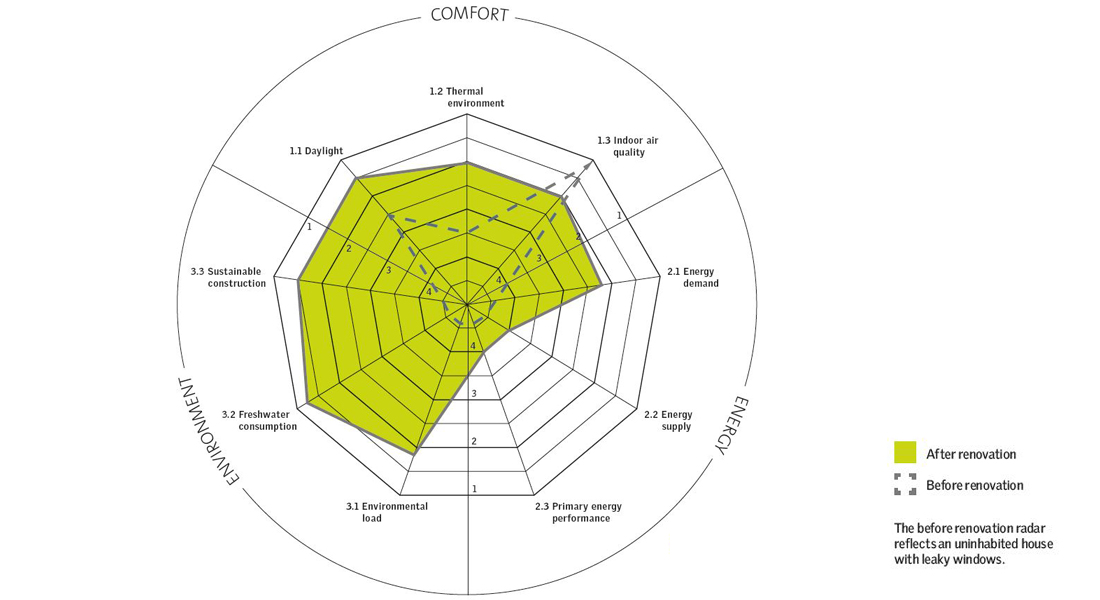
The main goal of RenovActive is to prove the financial viability of Active House renovation in social housing schemes across Europe. Therefore the renovation concept is based on Active House principles; the seven most applicable and cost-effective solutions for renovation. Each part consists of a building element that is created to give existing buildings the ability to perform on the same level as newly built houses. Depending on the existing building design and renovation budget, the different elements can be implemented to increase the level of daylight, improve ventilation, strengthen the climate envelope and expand the living space through densification or extension. The concept’s modularity adapts to each house typology.
COMFORT
Daylight
The RenovActive project focuses on providing maximum daylight. The VELUX Daylight Visualizer was used to simulate daylight levels in the building, revealing excellent levels of natural light after renovation. The various VELUX roof windows that will be installed in the house will be a good source of natural light and give the inhabitants indoor comfort all year round.
In view of the glazed surfaces, which guarantee levels of natural light and passive solar gains in winter, it is important to control excess heat using fully automated solar protection. The opening and closing of the exterior blinds will depend on the hours of sunshine and the outdoor temperature. The windows will also be fitted with interior blinds that will control the light levels as desired.
Indoor Climate
To ensure a healthy indoor atmosphere and a maximum of fresh air in the house, a natural ventilation system is fitted, in partnership with Renson (“C+ Health Box® system”). When the outside temperature is over 14°C, an automatic window-opening system (for both roof and façade windows) will be used. Natural ventilation will be controlled via the VELUX INTEGRA® system, which makes it possible to easily open or close windows. Sensors (humidity, temperature, CO2 etc.) integrated into the ventilation unit control the opening of the windows, guaranteeing excellent indoor air quality. In winter, air is let in by ventilation flaps integrated into the windows. This ensures maximum air quality and comfort: the ventilation levels adapt to user needs in real time. This system also saves energy, as it avoids excessive ventilation.
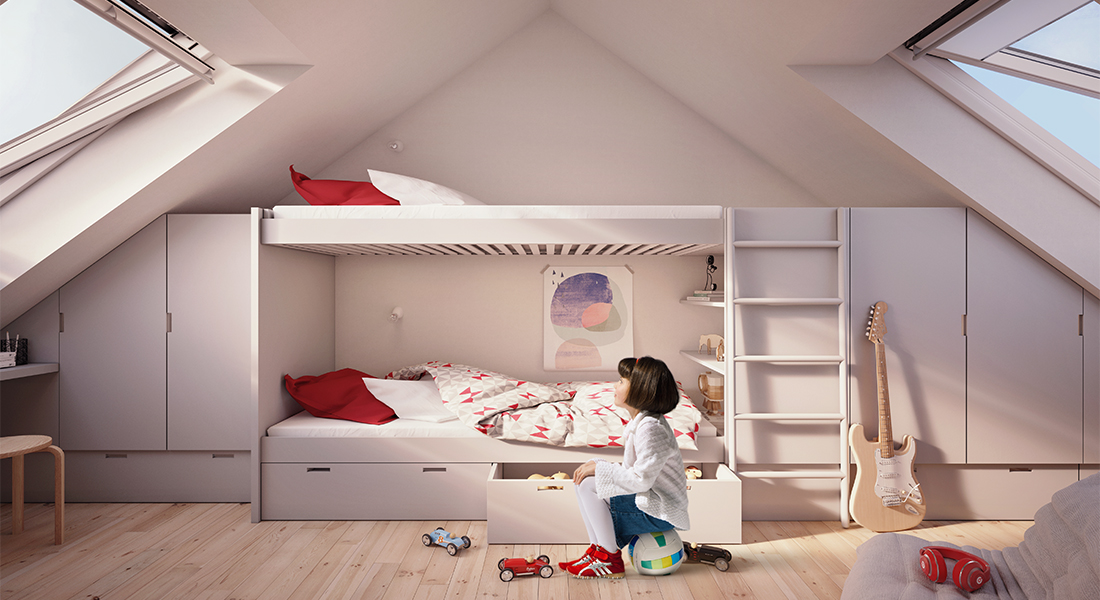
ENERGY
A proposal was made to place solar panels on the roof of the garden shed to heat water but the additional cost generated by the solar collector does not meet the social housing budget for this project.
The common heating method in Belgium is gas. For this project, VELUX has opted for an efficient gas condensation boiler that is connected to the existing network. Despite its environmental benefits, a heat pump was not considered due to its high cost (which is not included in the social housing organisation’s budget) and low reproducibility. It is also difficult to find sufficient space in the Bon Air neighbourhood for the pump to function properly (due to the minimum distance required between boreholes).
Finally, rainwater will be collected in a 5,000 litre tank and reused for flushing toilets, the washing machine, use in the garden, etc. Rainwater will be supplied by a RWR Smartflo SQE 3-40 Master Grundfos pump.
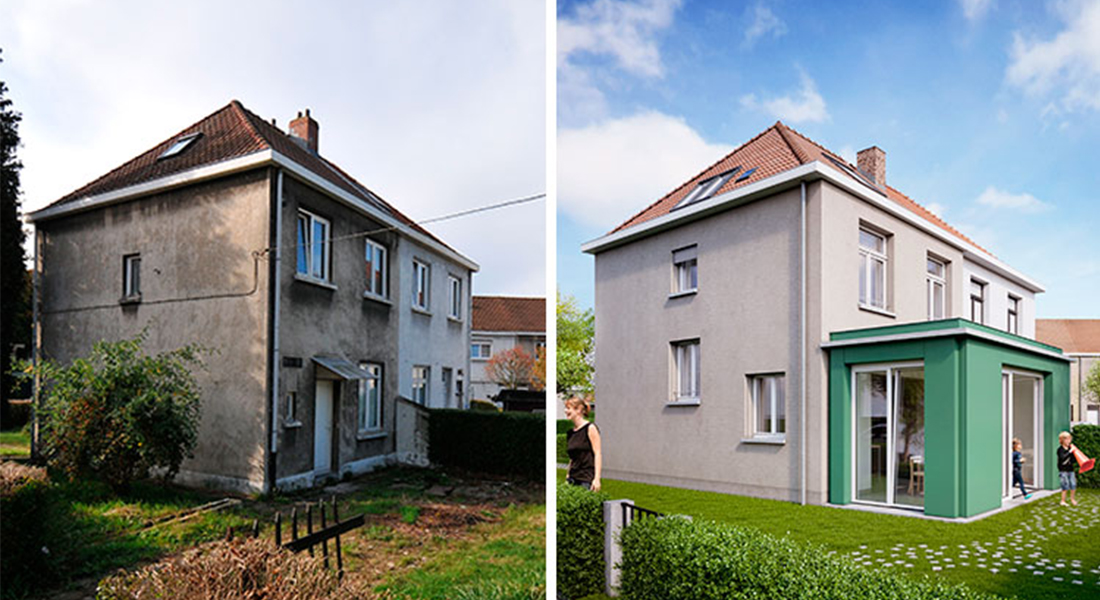
ENVIRONMENT
Although the RenovActive project focuses on the renovation of only one house in Bon Air, ONO Architectuur proposed an inspiring all-encompassing concept that would cover the entire area, and could be implemented by local authorities for an overall refurbishment of the neighbourhood to transform it into an attractive living environment.
ONO Architectuur’s renovation concept is far reaching, taking into consideration the entire Bon Air district. The establishment of a community energy system was envisaged to cover the energy needs of the entire neighbourhood. Architects proposed producing collective energy via a network powered by wind turbines, solar panels, photovoltaic panels, heat pumps and by a rainwater collection and treatment system.
Also included in this visionary concept is the idea that the house will integrate with its environment, thanks to an enhanced connection to the local context and an effective use of resources.
Social cohesion
To strengthen social cohesion within Bon Air, community gardens and green spaces will be developed to create common areas that will become meeting places and welcome rest. Playgrounds and recreation places will encourage outdoor activities and revive neglected zones.
Reorganising streets can help to restore the picturesque image of its original character. The redevelopment of the neighbourhood will also occur through the architectural refurbishment of its houses: refined architecture, repetition and uniformity, implemented in a green setting transforming the area into an attractive living environment.
Then Bon Air would form a cohesive and friendly community with a local school in the centre serving as a meeting point for residents.
